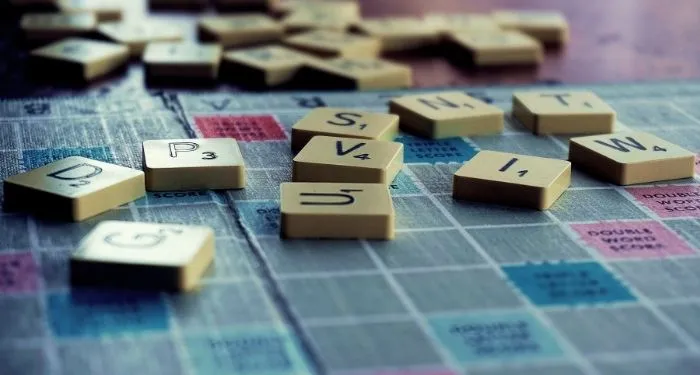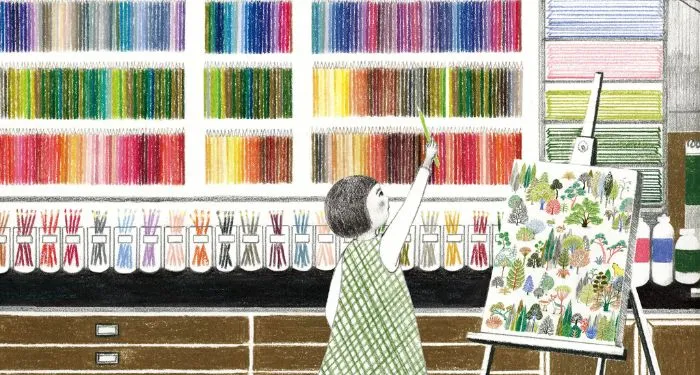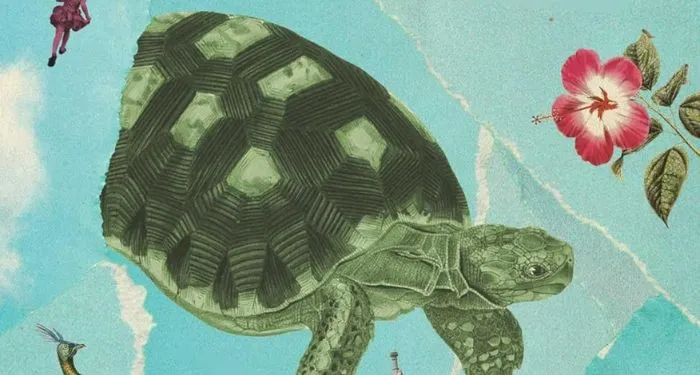You’ve probably never heard of Ural Tansykbayev, but he is one of Uzbekistan’s most important twentieth-century artists. His paintings and drawings unite the bright, organic daubs of Uzbek ceramics, the zigzags and blossoms of Central Asian textiles, the jagged shadows of Fauvism, and Constructivism’s kinetic volumes. Tansykbayev, born in 1904, was a member of the eclectic group of artists sometimes called the Turkestan avant-garde (“Turkestan” is an old term for Central Asia), a movement composed largely of Russian artists who applied modernist principles to regional subjects. As a Kazakh raised in Tashkent, Tansykbayev was one of the group’s only members of Central Asian descent. The avant-garde did not survive long in the USSR, but Tansykbayev adapted. He came to embody the Soviet dream of the ethnic minority worker who rises to become a celebrated artist representing his people. His first job was in a wine factory. By the height of his career, he was chairman of the board of the Union of Artists of Uzbekistan.
His painting The Road, from 1935, was the most striking canvas in a retrospective of his work that opened in Tashkent in early September, organized by the Uzbek government’s Art and Culture Development Foundation (ACDF). The road in question is a violet torrent edged with sunbaked pink walls. Greenish-white cloud-trees on a nearby hill are surreal evocations of Uzbekistan’s cotton cultivation, which the Soviets scaled up so sharply that irrigation made much of the Aral Sea a desert. Like many of his contemporaries across the USSR, Tansykbayev did his best work in the precarious but daring days of the 1920s and early 1930s. When socialist realism made “formalist” experimentation anathema, he denounced his artistic past. In the 1940s, after visiting the Soviet Western Front, he made gloomy, charmless patriotic paintings. Later he retreated to empty landscapes of ocher, green, and purple-blue, abandoning the dynamism of human forms and architecture, though he continued to celebrate the poetic landscapes of his country.
We are lucky that Tansykbayev’s enchanting early works survive. When an art collector and archaeologist named Igor Savitsky visited the artist’s studio in 1968, Tansykbayev told him to take whatever he wanted. Savitsky preserved the paintings and drawings in his private—one might even say secret—collection in the remote Karakalpak city of Nukus, far from the censors. In 1974 Tansykbayev traveled there to revisit his disgraced artworks, which were still unsuitable for public display in Brezhnev’s Soviet Union. But he died the night of his arrival, before he could visit the collection. In her essay in the show’s catalog the curator Zelfira Tregulova, until 2023 the general director of Moscow’s Tretyakov Gallery, suggests that what killed him was anxiety about encountering his former self.
Facing the past can be painful, even dangerous. But in the service of a campaign to remake its image in the eyes of the world, Uzbekistan is now rallying the diverse forms of beauty at its disposal, from Silk Road caravanserais to Soviet modernist masterpieces to the work of young Uzbek artists.
Until 2016 Uzbekistan was ruled by the Soviet holdover Islam Karimov, a president-for-life whose reign was defined by violent political repression and rampant corruption. His daughter Gulnara Karimova, an international socialite who dabbled in pop music and fashion, was notorious for her financial crimes; she is now serving a lengthy prison sentence for money laundering and fraud. Karimov was succeeded by his prime minister, Shavkat Mirziyoyev. Though he too was a former member of the Communist Party and served in the Soviet Uzbek government, Mirziyoyev brought a whiff of liberalization that encouraged the Uzbek diaspora to return. He has invited foreign investment and international tourism and is busily privatizing the post-Soviet economy. It is possible to speak more freely than it was during the Karimov era (admittedly a low bar). “Now Uzbek media and bloggers and everyone who’s producing information inside Uzbekistan can write about real problems, real issues that they are facing,” Temur Umarov, a fellow at Carnegie Russia Eurasia Center, told me. “However, they still need to follow certain rules. These rules are unwritten, they’re in the air.” One rule, at least, is written clearly: it is a criminal offense to criticize the president.
Like Karimov, Mirziyoyev has a glamorous and ambitious daughter, Saida Mirziyoyeva, who looks like a lost Kardashian in unusually modest garb. Forty-one-year-old Saida is now the head of the Presidential Administration, second only to her father in political power. It is possible that she will become Central Asia’s first female authoritarian leader—a dubious but still impressive victory. Under her leadership, Uzbekistan is becoming more modern, more technocratic, and somewhat more progressive. She began her tenure in government as deputy director of the Presidential Administration’s Agency of Information and Mass Communications, when she spoke in favor of a more open press, an inclusive society, and the protection of women’s rights, as well as the preservation of historical landmarks. The ACDF is chaired by the formidable UK-educated curator Gayane Umerova, who has a close relationship with Mirziyoyeva. Under Umerova’s guidance, the ACDF is making once-remote Uzbekistan a notable presence on the international arts scene. The Japanese “starchitect” Tadao Ando has been commissioned to build the new National Museum, to be opened in 2028. Such initiatives are part of a canny strategy to draw positive attention to a little-discussed country and thereby attract more foreign investment.
In September I attended a gala dinner with Mirziyoyeva and Umerova at the newly renovated Center for Contemporary Arts in Tashkent, a project of the French architectural firm Studio KO. The museum is housed in the shell of a 1912 diesel plant that powered the city’s first tramline. As the ACDF puts it, “This is where the electrification of the city of Tashkent began. Here, the renewal of the artistic environment of modern Uzbekistan will also start.” The project bears a distinct similarity to the once-flourishing Garage Museum of Contemporary Art in Moscow, which was first located in the Bakhmetevsky Bus Garage, a Constructivist landmark designed by Konstantin Melnikov in 1926. When it was founded in 2008, Garage, funded by the oligarch Roman Abramovich, was the symbol of a hip, cosmopolitan new version of Russia. The participation of famous international architects and artists was a reminder that flourishing democracy is not a requirement for joining the global arts scene. Those days of Russia’s rebranding now seem a distant memory. Today the country relies on missiles and drones to assert its prowess. Many Russian artists, curators, and other cultural figures have left. Some have found work in Uzbekistan, whose political trajectory is yet to be determined.
Prominent historians of Soviet architecture, many of whom are no longer able or willing to visit Russia, have come to Tashkent to help preserve, study, and restore the city’s Soviet architecture. This heritage, an unusual fusion of late Soviet modernism and traditional Central Asian techniques, is the subject of another ACDF-sponsored publication, Tashkent Modernism XX/XXI, a doorstopper that includes essays on architectural history, preservation plans, monographs on individual buildings, and a gorgeous visual essay by the Milanese artist Armin Linke. Aimed primarily at a professional audience, the book provides a wealth of information about a fascinating, little-known period in Soviet architectural history.
The USSR’s emphasis on racial equality (at least on paper) gave Central Asia a particular political significance. The region had already attracted illustrious foreign visitors such as Langston Hughes, who came to the USSR in 1932–1933 as part of a group of Black Americans commissioned to perform in a Soviet film about American labor and race relations. (The film was never made, but Hughes wrote numerous articles about the trip, as well as an engrossing, remarkably funny 1956 travel memoir, I Wonder as I Wander.) Under the Russian Empire, Central Asia had been racially segregated in ways that reminded Hughes of Jim Crow; he identified with the dark-skinned Uzbeks and Turkmens he met. For him the USSR was an astonishing new world in which the color line had been abolished, modernist art was revered by the state, and medical and dental care were free of charge.
During World War II many important Soviet institutions and cultural figures evacuated to Tashkent and Almaty, in Kazakhstan, for safety; during and after the war, this gave the two cities unusual access to resources, both material and human. The Soviet authorities decided that Tashkent would become a beautifully decorated display window onto the Soviet Orient, showing the world how the Soviets had successfully incorporated Central Asians into their utopian project. After a 1966 earthquake devastated the Uzbek capital, Brezhnev announced a plan for reconstruction, proclaiming, “Within two years, we hope to see Tashkent in a new form, setting the architectural tone for a great city of the future.” A number of the city’s most important Soviet architectural monuments date from this period.
When Audre Lorde visited in 1976, as an observer to the African-Asian Writers’ Conference, which was sponsored by the Union of Soviet Writers, the older parts of Tashkent reminded her of Ghana while the areas rebuilt after the earthquake were “almost a memorial to what can be done when a large group of people work together.” Though she found the socialist project deeply appealing, she sensed that the people she met on her trip were not speaking freely. In her essay “Notes from a Trip to Russia,” she observed, “The peoples of the Soviet Union, in many respects, impress me as people who can not yet afford to be honest. When they can be they will either blossom into a marvel or sink into decay.” She found no good answers to her questions about the status of homosexuals or Jews in the Soviet Union—but like Hughes, she was deeply impressed by the USSR’s universal health care.
Lorde arrived too early to visit the Peoples’ Friendship Palace, a four-thousand-seat concert hall built in 1981 and used for Communist Party meetings and congresses. Today its interior is stunning, with refulgent deep-blue tiling and chandeliers that resemble immense clusters of grapes. It looks like a sports arena crossed with a people’s Versailles. The exterior sends a more ambivalent message. The façade’s huge glass windows are softened—or defended, depending on one’s perspective—by a concrete brise-soleil with cornices and stalactites. This brise-soleil is reminiscent of traditional Islamic architecture, but it also makes the building resemble a fortress, undermining the egalitarian premise of Soviet grandeur. Yet the Friendship Palace’s Orientalist ornamentalism helped ensure its survival. More seductive and impressive than most concrete modernist buildings, it inspired the affection of Uzbek government officials. This explains why it escaped the fate of other major Soviet buildings that have been demolished or altered beyond recognition. Other lures for Soviet architecture fans in Tashkent include the Chorsu Bazaar, a giant concrete yurt adorned with mosaics; the glimmering sapphire-and-emerald columns of the Cosmonaut metro station, where heroes of space exploration peer at commuters from faux portholes; the retro-futuristic solar furnace, or “heliocomplex,” outside the city; and the dingy yet magnificent Hotel Uzbekistan, whose concrete façade billows like the sail of a ship.
Uzbekistan’s biggest draws, the destinations for tour groups that book entire hotels, are the old cities of Samarkand and Bukhara. Samarkand was renovated during the Soviet era into an immaculate, “improved” version of Tamerlane’s historic capital, with shining façades of geometric blue-and-white tiles. The ancient city of Bukhara, by contrast, is low to the ground and largely monochrome, with trading domes that mimic sand dunes. Once an important stop on the Silk Road, and the city Langston Hughes loved most in Central Asia, Bukhara is the host of Uzbekistan’s inaugural biennial, organized by Biennial Commissioner Gayane Umerova and curated by the artistic director Diana Campbell with Timur Zolotoev. Its opening in September marked a new phase in the country’s campaign for global cultural capital.
Even more than Venice, home of the original Biennale, old Bukhara feels like the world’s most fully realized stage set. Its restoration over recent years, another ACDF initiative—and more extensive than some artists and architects would have liked—was guided by the architect Wael Al Awar, who has advocated for giving new life to historical sites rather than attempting to preserve them exactly as they are or to restore them to their former glory. His intention was to make old Bukhara’s landmarks interactive, well-used spaces that flow into one another; their surfaces have been restored to a state so pristine that they look almost airbrushed. The twelfth-century Magoki Attori Mosque, built on the site of a Zoroastrian temple and turned into a carpet museum in the late twentieth century, has become a visitor center and ACDF “archive” of Bukhara’s past and present. The surrounding plaza is now ringed by steps that serve as seating, allowing it to be used for events.
At the biennial’s opening, international art world scenesters in futuristic sunglasses, trendy Salomon sneakers, outfits from Issey Miyake’s travel-friendly line Pleats Please, and newly purchased embroidered robes mingled with local grandmothers in colorful ikat dresses and headscarves. There were more young children than I have ever seen at a cultural event; as the organizers often reminded us, Uzbekistan is a young and rapidly growing country. All the biennial’s works were specially commissioned, pairing artists with local artisans. The Bahamian artist Tavares Strachan collaborated with the Uzbek carpet maker Sabina Burkhanova to produce carpets decorated with Hughes’s poetry from his Central Asian sojourn, along with images of cotton production and space travel. When I toured the exhibit, the descriptions of the artworks had not yet been posted, and I suspect that many viewers admired the beautiful handiwork of the rugs without having much idea of the history or politics behind them.
Combined with its extraordinary setting, the biennial’s emphasis on crafts gave it an easily comprehensible beauty that was a hit on Instagram. In that sense it was utterly democratic. Its accessible beauty was heightened by the fact that many of the works invited interaction and touch. In Bukhara, textiles are routinely displayed or worn in the sun without fear of fading; exposure is thought to season rather than spoil the colors of the natural dyes. This openness to being altered was part of the biennial’s ethos. I watched a little girl roller-skate across a freshly installed work by the Brazilian painter Marina Perez Simão and the Uzbek mosaicist Bakhtiyar Babamuradov. Children chased one another through the labyrinth created by Antony Gormley’s open-air sculpture of bricks made of mud and fermented straw. Sun, wind, cold, and dust were invited, too. The opening was timed to coincide with the full moon, which took its rightful place as the ultimate art installation.
Much of Bukhara was gravely damaged by the Red Army during the civil war that followed the Russian Revolution. Many of the biennial’s exhibits addressed Soviet misdeeds, from the deportation of its Korean population to Uzbekistan (several young artists featured are Uzbeks of Korean descent) to the ruin of the Aral Sea by industrial irrigation. There were artists from all over Central Asia, including Mongolia; a number from South Asia and East Asia; and many from Russia. But there was not a single artist from Ukraine. While Soviet crimes were up for discussion, Russia’s current depredations were not.* As you would expect from a doubly landlocked country, Uzbekistan works to maintain good relations with all its powerful neighbors. But the relationship most on display was that between Uzbekistan and Saudi Arabia, host of multiple biennials of its own. The Saudi companies ACWA Power and Vision Invest sponsored the Bukhara Biennial, and the country’s affluent, technologically sophisticated Muslim dictatorship is an increasingly important example for the Central Asian nation, even beginning to take precedence over the old trifecta of the United States, Russia, and China.
One of my favorite works at the Bukhara Biennial was Intimate Conversations, by the Indian artist and dancer Shakuntala Kulkarni in collaboration with artisans and dancers from Uzbekistan and India. Kulkarni projected the bodies of female dancers onto the walls of a tiny room in a caravanserai, a space that one or two merchants would have shared while passing through the city. The foot-tall apparitions leaped from one wall to the next, like ghosts insisting on telling their stories. During a performance with musicians from the Bukhara Philharmonic, Kulkarni and her fellow dancers were nearly interrupted by the small child of one of the musicians, who wandered onto the performance floor, drawn instinctively to his father.
Then a drone buzzed overhead; the spectacle had to be recorded. The grandiose promotional video that was released a couple of days later flashed from one ravishing installation to another, all the biennial’s art and all of old Bukhara serving as a backdrop for the beautiful Saida Mirziyoyeva, with her glossy onyx bob and long white dress draped with jewels. As I watched the video, I wondered what all this beauty meant. Was it a PR strategy? Capital? An ornament of power? Might art still be a means of liberation or of transcendence?
No drone could spoil the wordless eloquence of Kulkarni’s performance, whose solemn, graceful movements, influenced by Indian traditional dance, were choreographed by Arundhati Chattopadhyaya. Kulkarni is tall and thin, with the sunken, riveting eyes of a great tragedian, and at seventy-five her body shows no signs of diminished mobility even when seen beside dancers in their teens. She spent almost a year in Uzbekistan with dancers, musicians, and Karakalpak weavers who worked with her long-term collaborators from Assam. This reunion of South and Central Asian craftspeople recalled the deep historical ties between the subcontinent and the steppe; Tamerlane was the great-great-great-grandfather of Babur, founder of the Mughal Empire. The sculptor Antony Gormley described Bukhara to me as “the navel of the Eurasian continent.” It has been a place of exchange for millennia, and indeed this biennial felt like a revival of that tradition.
What do the manifold beauties of the Bukhara Biennial, the work of Ural Tansykbayev, or the lovingly restored Soviet palaces mean for Uzbekistan’s future? Not too long ago, it seemed that an authoritarian or semiauthoritarian country’s entry into the international culture circuit was a way of showing the world that it wasn’t so mean or scary after all, and that it was committed to the ostensibly liberalizing project of globalized culture. In the 2000s and 2010s a new Moscow with cool contemporary art museums, photogenic parks, artfully lit sushi restaurants, and, of course, its very own biennial helped convince foreign visitors, and even many of its own residents, that the bad old world was gone for good, even if the new world was hardly democratic.
But Uzbekistan has launched its cultural project amid a new global order. The US example is no longer aspirational, Europe is in decline, and a trip east, rather than a trip west, looks like the way to the future. From Samarkand’s madrassas to Tashkent’s jewels of Soviet modernism to Ando’s future museum, Uzbekistan’s monuments testify to the aesthetic possibilities of authoritarianism. The country’s citizens (at least those in major cities) have newfound access to global art, to high-speed trains, to clean energy. Uzbekistan doesn’t have free elections or free speech. But it does have a biennial.



















 English (US) ·
English (US) ·